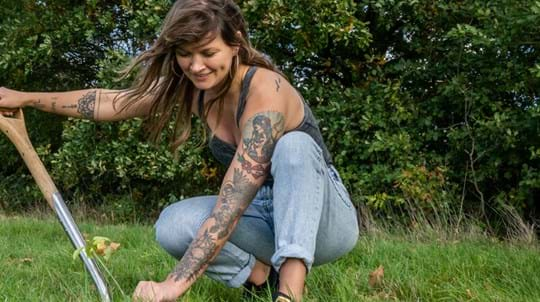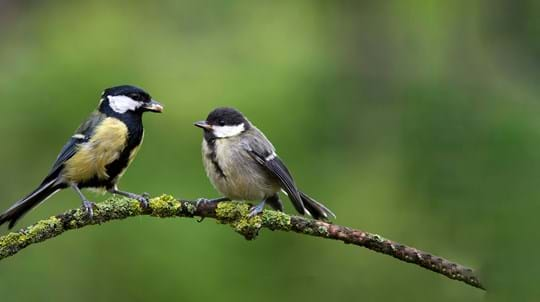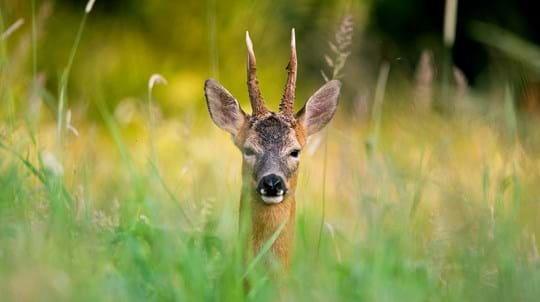Spot the signs of the seasons
Let us know what's happening to animals and plants near you and help scientists track the effects of climate change on wildlife.
Explore Nature's CalendarFor nature to thrive, timing is everything. But as global temperatures rise, seasonal events such as budburst and flowering are happening earlier – with disastrous knock-on effects for native wildlife.
From the ripening of wild autumn fruits to the migration of birds, seasonal events exist in a delicate balance.
But with our planet heating up at an alarming rate, we are seeing increasingly extreme storms, droughts, floods and unseasonal cold and hot spells. What’s more, seasons are arriving sooner than expected. In the UK, spring has crept forward by eight days since the early 1900s.
Unusual seasonal patterns confuse wildlife. With some species more sensitive to temperature rises than others, carefully synchronised events across different levels of the food chain are falling out of time. For instance, many insects have begun appearing earlier, but birds haven’t adjusted their breeding times accordingly, meaning that in some years there may not be enough food available for hungry chicks.
This ecological mismatch could spell disaster for nature. With entire ecosystems thrown out of step, precious native wildlife might be lost forever. It is vital that we monitor these trends to understand what is happening – and that’s where you can help us.
Let us know what's happening to animals and plants near you and help scientists track the effects of climate change on wildlife.
Explore Nature's CalendarAcross the complex web of life, events are carefully synchronised. Flowers have evolved to bloom when their pollinators are out in droves, while birds time their breeding season to perfectly coincide with an explosion of caterpillars in spring.
But accelerated climate change is resulting in milder winters, hotter summers and the early arrival of spring. Across Europe, spring is now advancing by 2.5 days per decade. Disoriented wildlife has begun appearing weeks or even months before they usually would, disrupting the harmony of fragile ecosystems. It’s vital that we understand these shifting trends helps us to predict which species will be most affected by climate change.
Have you seen snowdrops flowering or spotted your first swallow on the wing? Let us know! By taking part in Nature’s Calendar and tracking wildlife near you, you’ll be contributing to an impressive biological record that dates all the way back to 1736.
Keep a regular eye on your garden, park or local woodland so that you can see when something changes. Whether you record the ripening of blackberries or the appearance of frogspawn, you’ll be providing scientists with vital evidence about the effects of global warming on nature, helping us to influence policymakers and reduce the likelihood of further climate change.
Have you seen your first butterfly or swallow of spring? Or your first ripening berry or autumn leaf? Let us know what's happening near you.
Explore Nature's CalendarWith the turmoil caused by climate change, we could stand to lose some of our most iconic species. Read on to discover how shifting seasonal patterns are affecting native wildlife and their intricate relationships.
Please note: some (but not all) of these species are recorded on Nature’s Calendar, including blue tit, oak and cuckoo.
These tiny creatures spend up to seven months of the year in a deep slumber and rely on a varied diet to support their sleepy lifestyle. In autumn, hazel dormice gorge on ripe blackberries and hazel nuts, almost doubling in weight to prepare for hibernation. When they awaken in spring, they regain energy by feasting on blossoming flowers of trees such as oak and hawthorn.
But milder winters are disrupting the hibernation cycle of hazel dormice, causing them to wake up more frequently or earlier than usual, before sufficient food is available.
Winter moths are feeling the effects of year-on-year early springs. Females lay their eggs between cracks and crevices in the bark of oak trees, ready to emerge as tiny pale green caterpillars come spring. Usually, the eggs hatch just in time for oak leaf budburst, ensuring there are plenty of young leaves to munch on.
But warmer winters with fewer frosts mean winter moth eggs are hatching before oak buds appear. As a result, many newly hatched caterpillars struggle to find enough food and populations may begin to decline.
A master of deception, the early spider orchid has evolved to exude the same sex pheromone as female miner bees. This tricks unsuspecting male bees into pollinating the orchid’s alluring flower.
However, records dating as far back as 1848 show a worrying shift in this relationship. Rising temperatures mean male solitary bees are now on the wing before early spider orchids have had a chance to flower. This mismatch makes pollination much less likely, threatening the survival of both species.
What’s more, considering that flower pollination is crucial to food production across the globe, this dynamic shift could illustrate the beginning of a much larger problem.
Come breeding season, blue tits have many hungry mouths to feed. While raising young chicks, blue tits must find a staggering 1,000 caterpillars each day. To satisfy the demanding appetite of their offspring, it is essential that parent birds time their breeding to coincide with the spring peak in caterpillar abundance.
But warmer temperatures are having a knock-on effect: oak trees leaf earlier, meaning that caterpillars may peak in numbers before young chicks have hatched. In years of early leaf emergence, many blue tit chicks could face starvation. Similar trends are affecting many of our best-loved woodland birds, from pied flycatchers to great tits.
The early arrival of spring is also wreaking havoc with the breeding habits of cuckoos, which migrate to the UK each year from Africa. This brood parasite is notorious for its lazy parenting. Rather than raising its own young, the cunning female cuckoo lays its egg in another bird’s nest. The host - often a dunnock, meadow pipit or reed warbler - will care for the cuckoo chick like one of its own.
However, many of these host species are arriving at breeding grounds earlier in response to climate change, while the cuckoo has only slightly advanced its migration timings. This mismatch makes it trickier for cuckoos to find a host nest. What’s more, by the time cuckoos arrive in Europe, they have missed the peak availability of many insects including hairy caterpillars, which they rely on for food.
When it comes to climate change, our message is clear: native woods and trees are one of the best ways to tackle the climate crisis. Woodlands are brilliant at locking up carbon, reducing pollution and flooding while supporting people and wildlife. But with just 13% woodland cover, the UK needs desperately need more trees to save nature. That’s why we’re on a mission to grow millions of healthy, native trees across the UK to help protect us from the effects of climate change. Find out more about our Plant More Trees campaign.

Support us
We're on a mission to grow millions of healthy, native trees across the UK to help protect us from the effects of climate change.

Visiting woods
Help monitor the effects of climate change on wildlife near you. Your records contribute to a growing body of scientific evidence on global warming.

Trees woods and wildlife
Explore our species guides to the wildlife that depends on woods and trees, from plants and fungi to mammals, birds, bees and beetles.